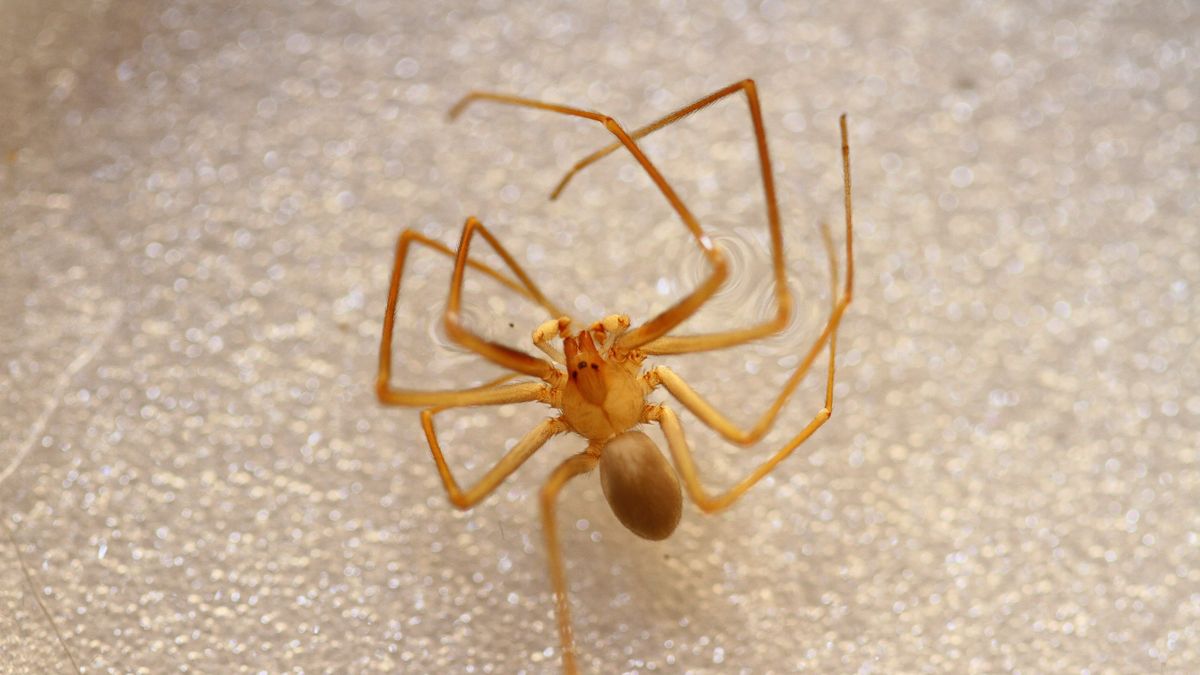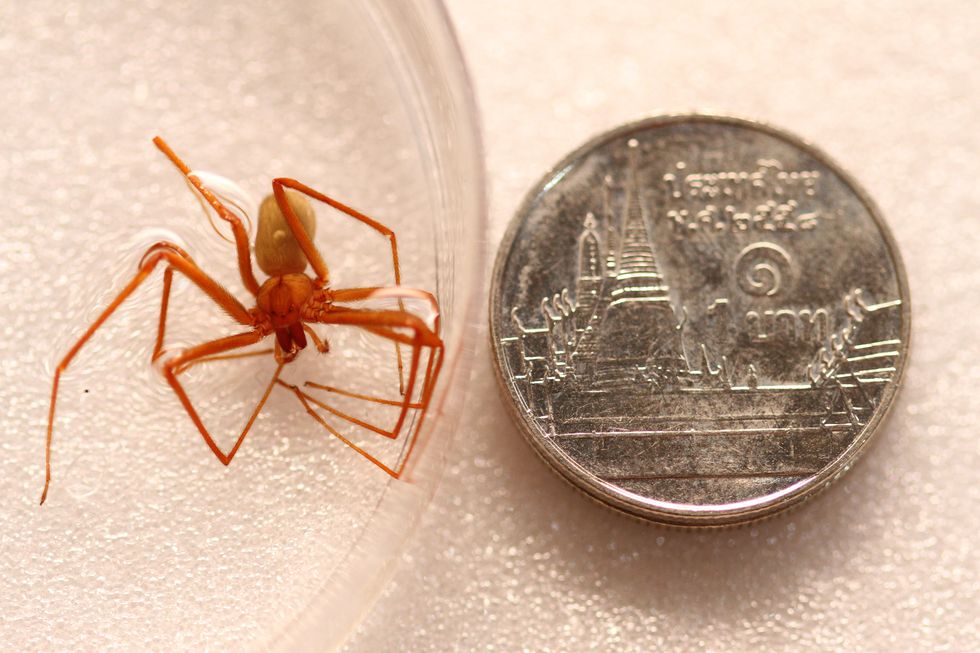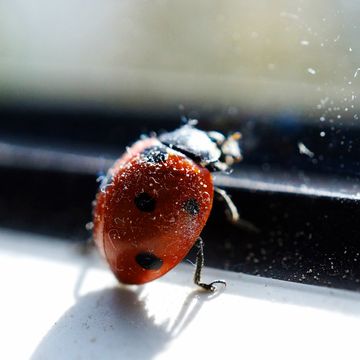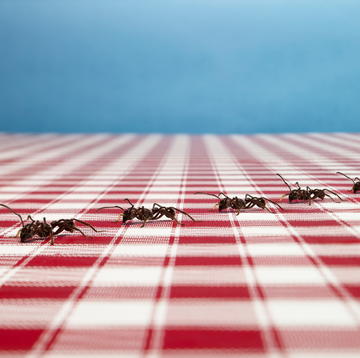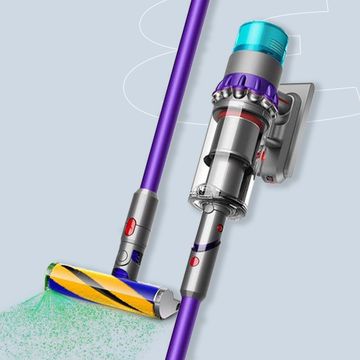Students at the University of Michigan can use their school library again after the building temporarily closed due to venomous spiders. A pest management service at the school’s Ann Arbor campus spotted three Mediterranean recluse spiders in a basement storage area, according to the Associated Press. The library reopened on Tuesday after being closed on Sunday and Monday.
University spokeswoman Kim Broekhuizen told Prevention.com that the spiders were not found in any public spaces of the building and that “a misunderstanding of the situation led the library to close for two days.”
“Based on what we know now, library managers agree that it was a mistake to close the building and they apologize for the inconvenience to the university community,” Broekhuizen says.
But what are Mediterranean recluse spiders? And how are they different from the infamous brown recluse that’s common in the U.S.? Here’s what you should know.
What is a Mediterranean recluse spider, and how is it different from a brown recluse spider?
This spider is a member of the genus Loxosceles and is a “cousin to the brown recluse,” says animal behavior researcher Anne Danielson-Francois, Ph.D., chair of the Biological Sciences Discipline at University of Michigan Dearborn. “It’s cosmopolitan, found worldwide, and tends to hitchhike on people’s belonging or building materials,” she says.
Mediterranean recluse spiders are originally from the Mediterranean and Middle East but have spread globally because they’re “good at sneaking into things,” Danielson-Francois says. In the U.S., the spiders have been found in 22 states.
“Their distribution in the U.S. has been described as widely distributed but rarely encountered,” says Chad Gore, Ph.D., a board-certified entomologist with Ehrlich Pest Control.
What do Mediterranean recluse spiders look like?
They look “almost exactly like the brown recluse,” Danielson-Francois says. A Mediterranean recluse spider has a “violin” shape at the top of its cephalothorax (its fused head and thorax), like a brown recluse, although the marking won’t be as obvious in a Mediterranean recluse spider. It also has six eyes, a small body, and very long legs. Overall, a Mediterranean recluse spider is about the size of a quarter, legs included, Gore says.
Where do they usually live?
Mediterranean recluse spiders like to be in dark, enclosed spaces away from people. “They are cave-loving,” Danielson-Francois says, noting that these spiders like basements, tunnels, and other places where they can hide and avoid you.
They also tend to congregate in damp areas that have populations of the foods they like to eat—cockroaches, termites, and silverfish. Mediterranean recluse spiders are “not terribly likely to leave” their habitat and “they like not having a lot of foot traffic,” Danielson-Francois says.
Do Mediterranean recluse spiders bite?
While Gore says bites from Mediterranean recluse spiders are rare, they can be very serious and even deadly.
A 2016 case report published in the journal Case Reports in Emergency Medicine details how a 65-year-old woman in Italy died after being bitten on the hand by a Mediterranean recluse spider while cleaning her cellar one night. By the next day, the woman had a fever and painful lesion around the bite. She went to the emergency room and died 12 hours later.
It’s important to note, though, that this woman’s case marked the first known death in Europe from a Mediterranean recluse spider bite. A bite from a Mediterranean recluse spider can cause death of body tissue (a.k.a. necrosis) and skin lesions, Danielson-Francois says. Reactions can happen two to six hours after the bite.
Venomous spiders “inject chemicals” into their prey to “liquify them” and then eat “the resulting ‘slurpy,’” explains Dina M. Fonseca, Ph.D., a professor of entomology at Rutgers, The State University of New Jersey and director of the Rutgers Center for Vector Biology. This is why a bite of a Mediterranean recluse spiders destroys the tissue at the site of the bite, she says, adding, “the site of the bite becomes red, there is intense pain and itching and, if left untreated, an open sore can develop in a week or so after the bite. If you are bit, seek medical attention immediately—take the spider with you, if you can.”
What should you do if you think you see a Mediterranean recluse spider?
The good news: It’s pretty unlikely you’ll see one of these around your home. “The brown recluse spider has been found in residences, but the Mediterranean recluse spider has not,” Danielson-Francois says. “They’re cryptic inhabitants of deep infrastructures.” That means they’re more likely to be lurking in subbasements of government buildings and steam tunnels—places that you’re unlikely to be spending a lot of time in.
“Nobody should panic that this is in their house,” Danielson-Francois says.
If you happen to spot a spider in your home and you’re concerned, Danielson-Francois recommends snapping a photo and uploading it to the Seek app, which is run by the California Academy of Sciences. “You can point it at any plant, mushroom, and animal, and it will search the database to help identify it,” she says.
Spiders will usually leave you alone and can even be beneficial, as they eat other pests that you don’t want to deal with. But if you’re still not sure what kind of spider is in your home or you’re worried that there may be more, Gore says it’s time to call a professional pest management service.
Go here to join Prevention Premium (our best value, all-access plan), subscribe to the magazine, or get digital-only access.
FOLLOW PREVENTION ON INSTAGRAM
